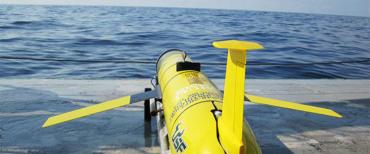
Red tide off Florida is virtually gone now, showing up at near-undetectable levels. Nevertheless, at the University of South Florida, serious work on Karenia brevis, the harmful algae that causes red tide, is ongoing and producing studies of some significance.
A new USF study was published Thursday in the Journal of Geophysical Research-Oceans, finding that while traces of the bloom are always present offshore in the Gulf of Mexico, it was the ocean circulation that made 2018 the worst year for red tide in more than a decade.
Karenia brevis is the algae that causes respiratory issues and was responsible for the massive fish kills last year particularly in Southwest Florida and subsequent tourism losses. In the last year, local governments have spent $17.3 million provided by the state to combat outbreaks of red tide (salt water-occurring) and toxic blue-green algae (fresh water-occurring).
Though many in South Florida were playing "pin the blame on the scapegoat (agricultural runoff)" during 2018, they were wrong, USF scientists say.
By affecting the nutrient levels offshore, marine scientists at the University of USF showed that the ocean circulation played a controlling role in the severity of the occurrence.
If nutrient levels offshore are high in spring due to the upwelling of deeper ocean waters, then there tends not to be major red tide blooms along the shoreline in fall, say USF scientists. Such upwelling did not occur in winter and spring of 2018, allowing a new bloom to form offshore in spring and summer 2018. An upwelling circulation then set in toward the end of July, and the seed was planted, so to speak. The newly formed bloom would be carried to the coastline along the bottom where it reinforced what had already been in place from 2017.
Tropical Storm Gordon apparently disrupted the upwelling circulation temporarily, allowing some of the new bloom to be carried to the Florida Panhandle. After the passage of Gordon, the upwelling circulation then allowed the bloom to be transported offshore at the surface to eventually be carried to Florida's east coast by the Gulf Stream. Thus, the rare occurrence of Karenia brevis at three different locations (Florida's west, Panhandle and east coasts) may be attributed to the ocean circulation.
"This further demonstrates that the ocean circulation is the major determinant of Florida's Karenia brevis harmful algae blooms, dispelling the myth that land-based fertilizers are to blame," said Robert Weisberg, Ph.D., distinguished university professor of physical oceanography. "While pollutants can exasperate an existing red tide, they are not the root cause."
In 2015 scientists from the University of South Florida’s College of Marine Science received a total of more than $750,000 in two separate NOAA grants to further the development of new technologies to forecast occurrences of red tide and to identify Karenia brevis, the organism lies at the root of the toxic blooms.
Besides ocean circulation models, the team at USF and collaborators with the Florida Fish and Wildlife Conservation Commission (FWC) deployed an autonomous underwater glider for a near month-long mission. Its sensors detected relatively high chlorophyll and low oxygen levels near the sea floor, along with upwelling circulation. On-site sampling also helped pinpoint the initiation zone for all three regions to be the middle shelf some 30 to 50 miles off the coast from north of Tampa Bay to Sarasota Bay.
Weisberg and his colleagues have accounted for the occurrence or lack of occurrence of major red tide blooms in 20 of the past 25 years based on the ocean circulation conditions. While recent sampling shows very low concentrations of Karenia brevis offshore, which is not a cause for immediate concern, it is too early to speculate on what future conditions may be. Weisberg said he hopes to have a better idea of the possible severity of 2019's red tide season in mid-June.


